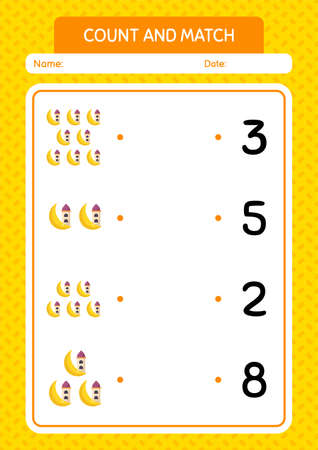Debunking Common Tarot Misconceptions
When people in America hear the word “tarot,” a lot of images and ideas may pop up: fortune-tellers in dark, mystical rooms, dramatic predictions of doom, or magical powers only a select few can access. Thanks to Hollywood movies, TV shows, and urban legends, tarot reading is often misunderstood. In reality, tarot is much more approachable—and less mysterious—than these stereotypes suggest. Before diving into the differences between intuitive and traditional tarot reading, lets clear up some of the biggest misconceptions.
Popular Tarot Stereotypes in American Culture
| Stereotype | The Reality |
|---|---|
| Tarot predicts your exact future | Tarot offers guidance and insights, not fixed predictions. It helps you reflect on situations and make empowered choices. |
| Only psychics can read tarot cards | Anyone can learn to read tarot with practice and study. Its not about having “special powers” but about developing intuition and understanding symbolism. |
| Tarot is associated with evil or bad luck | Tarot is simply a tool for self-reflection and personal growth. It isnt inherently good or bad—it depends on how its used. |
| You have to follow strict rules when reading tarot | There are many styles of reading tarot. Some people follow traditional methods; others use their intuition. Theres no single “right” way. |
| Tarot readings are always serious or scary | Tarot can be lighthearted, fun, and even uplifting! Many people use it as a creative tool or for brainstorming solutions. |
Why These Myths Matter
These myths stick around because theyre dramatic and intriguing—but they also keep people from exploring tarots true potential. By busting these common misconceptions, we open the door for more honest conversations about what tarot really is and how it works. Whether youre interested in intuitive or traditional tarot reading, starting with a clear understanding helps you get the most out of your experience.
2. What Is Traditional Tarot Reading?
Traditional tarot reading is rooted in centuries-old systems, structured methods, and a deep respect for the established meanings of each card. While intuitive readings focus on gut feelings and personal impressions, traditional tarot relies on time-honored practices that have been passed down through generations.
Origins of Traditional Tarot
The origins of traditional tarot date back to 15th-century Europe, where the cards were first used as playing cards before evolving into tools for divination. Over time, specific decks like the Rider-Waite-Smith and the Tarot de Marseille became standard references for readers around the world, especially in Western culture.
Structure and Systems
One hallmark of traditional tarot is its structured approach. Each deck typically consists of 78 cards divided into two main groups: the Major Arcana and Minor Arcana. The Major Arcana deals with major life themes, while the Minor Arcana addresses everyday events. Every card has an established meaning, often influenced by symbolism, numerology, and elemental associations.
Breakdown of a Traditional Tarot Deck
| Section | Number of Cards | Main Focus |
|---|---|---|
| Major Arcana | 22 | Life lessons, spiritual journeys |
| Minor Arcana | 56 (4 suits) | Daily events, emotions, actions |
Methodologies Used in Traditional Tarot Reading
Traditional tarot readers often follow established spreads—specific layouts for arranging the cards to answer questions or provide guidance. The most famous spread is the Celtic Cross, but there are many others tailored to different types of questions.
Popular Traditional Tarot Spreads
| Name of Spread | Description | Common Use |
|---|---|---|
| Celtic Cross | A 10-card spread covering multiple aspects of a situation. | General readings, deep insights |
| Three-Card Spread | Presents past, present, and future or situation, action, outcome. | Straightforward answers, quick guidance |
| Horseshoe Spread | A 7-card spread showing influences and advice. | Understanding complex situations |
The Role of Established Meanings and Guidebooks
A key feature of traditional tarot is its reliance on guidebooks or reference materials. Readers study these resources to learn the classic interpretations for each card upright and reversed. Many traditional readers memorize keywords or phrases associated with every card to ensure consistency and accuracy in their readings.

3. Understanding Intuitive Tarot Reading
Intuitive tarot reading is all about trusting your gut and letting your personal feelings guide the way you interpret the cards. Unlike traditional tarot, which relies on fixed meanings and established spreads, intuitive reading gives you the freedom to let your impressions and instincts lead the session. This approach is gaining popularity in America because it encourages self-expression and personal growth, fitting perfectly with the country’s love of individuality and authenticity.
The Role of Personal Intuition
In intuitive tarot reading, your inner voice plays a starring role. Readers pay close attention to their first impressions, images that pop into their minds, or even emotions they feel when a card appears. It’s less about memorizing book definitions and more about what the card means to you in the moment. For example, while the traditional meaning of The Tower card is sudden change or upheaval, an intuitive reader might see it as a sign of breakthrough based on the vibe they get during the reading.
Flexibility in Interpretation
Traditional tarot often follows strict layouts (like the Celtic Cross) and set interpretations for each card. Intuitive readers, on the other hand, may mix up spreads or even pull cards one at a time, allowing the story to unfold naturally. They are flexible—sometimes letting clients pick cards themselves or focusing on cards that “jump out” from the deck. This flexibility makes sessions feel more personal and tailored to each individual’s needs.
Interpretational Freedom: A Quick Comparison
| Aspect | Intuitive Tarot Reading | Traditional Tarot Reading |
|---|---|---|
| Main Focus | Personal feelings and instincts | Book meanings and established symbolism |
| Approach to Spreads | Flexible; can be improvised or customized | Fixed layouts (e.g., Celtic Cross) |
| Card Meanings | Open to interpretation based on context and intuition | Consistent meanings passed down through tradition |
| User Involvement | Encourages active participation from client | Mainly guided by reader’s knowledge and expertise |
| Cultural Fit in America | Aligns with values of individuality and self-discovery | Respects heritage but may feel rigid to some people |
The American Twist on Tarot Reading
In the U.S., people often look for tools that help them express themselves or gain insight into their lives in a unique way. Intuitive tarot reading fits this mindset perfectly by letting each session be as unique as the person receiving it. Whether you’re new to tarot or an experienced reader, embracing your own intuition can make readings feel more meaningful—and way less intimidating.
4. Spotting the Key Differences
Card Interpretation: Rulebook vs. Gut Feeling
When it comes to interpreting tarot cards, traditional and intuitive readers take very different paths. Traditional tarot reading relies on established meanings for each card—think of it as following a rulebook. Each card has a set of keywords, symbolism, and historical associations that guide the interpretation. In American settings, you’ll often see traditional readers referencing guidebooks or memorized meanings to ensure accuracy and consistency.
On the other hand, intuitive tarot reading is more about tuning into feelings, impressions, and the energy in the room. An intuitive reader might notice a color on a card that suddenly feels important or get a mental image that shapes their explanation. Rather than sticking strictly to traditional interpretations, they blend personal intuition with the cards’ imagery.
| Aspect | Traditional Tarot Reading | Intuitive Tarot Reading |
|---|---|---|
| Card Meaning Source | Guidebooks & historical meanings | Personal intuition & impressions |
| Interpretation Style | Consistent, structured | Flexible, varies by session |
| Tools Used | Books, notes, memorization | Sensory cues, feelings, imagery |
Session Flow: Structure vs. Flexibility
The flow of a tarot session also highlights major differences between these two styles. Traditional readings typically follow set spreads—like the Celtic Cross or Three-Card Spread—and stick closely to answering the client’s original question. The order is predictable and helps clients feel grounded in familiar patterns.
Intuitive readings can be much more free-form. The reader may start with one spread but switch things up based on what they sense from the client or the energy in the room. It’s not unusual for an intuitive reader in America to ask clients to pick their own cards or even draw extra cards if something “feels off.” This approach makes each session unique and tailored to the individual.
Comparison Table: Session Flow
| Session Element | Traditional Approach | Intuitive Approach |
|---|---|---|
| Spread Used | Set patterns (e.g., Celtic Cross) | Flexible; may change mid-session |
| Pacing | Steady and systematic | Adjusts based on energy/intuition |
| User Involvement | Mainly listens and asks questions at end | Might participate throughout session |
The Reader’s Role: Expert vs. Guide or Friend
The relationship between reader and client can feel very different depending on the style used. Traditional readers often take on an expert role—they’re seen as authorities who interpret ancient wisdom for their clients. Clients come seeking answers and trust in the reader’s expertise.
Intuitive tarot readers in America often act more like guides or even friends. They encourage open conversation during sessions and invite clients to share their thoughts or gut reactions to cards. This collaborative atmosphere can make sessions feel less formal and more supportive.
The Reader’s Role Comparison:
- Traditional Reader: Authority figure; offers clear answers based on tradition.
- Intuitive Reader: Supportive guide; encourages participation and shared insight.
This breakdown should help you spot how these two approaches differ in American tarot culture, making it easier to choose which style fits your needs—or even blend both for your own practice!
5. Choosing the Right Approach for You
Picking between intuitive and traditional tarot reading is a personal journey. Each style offers its own strengths, and what works best depends on your personality, goals, and spiritual beliefs. Here’s how you can figure out which approach fits you best:
Know What Matters Most to You
Start by asking yourself what you want from tarot readings. Are you drawn to structure and history, or do you prefer going with your gut feelings? The table below highlights the core differences to help you decide:
| Aspect | Traditional Tarot Reading | Intuitive Tarot Reading |
|---|---|---|
| Focus | Symbolism, set meanings | Personal impressions, intuition |
| Approach | Follows established spreads and interpretations | Flexible, free-flowing, less formal |
| Best For | Lovers of structure, history buffs, analytical thinkers | C creatives, empaths, those open to spiritual flow |
Tips for Getting Started
If You’re Leaning Toward Traditional Tarot:
- Pick up a classic tarot deck like the Rider-Waite-Smith.
- Read guidebooks and study card meanings.
- Practice with set spreads (like Celtic Cross or Three-Card Spread).
If Intuitive Reading Feels Right for You:
- Select a deck that resonates visually or emotionally with you.
- Spend time meditating with your cards to connect on a deeper level.
- Journal your first impressions before looking up any meanings.
Try Both—Mix and Match!
You don’t have to stick to one style forever. Many readers blend both approaches as their confidence grows. Try out each method and notice what feels natural and meaningful for you. Remember, tarot is a tool for self-discovery—there’s no single “right” way, just the way that brings insight and comfort to your life.


